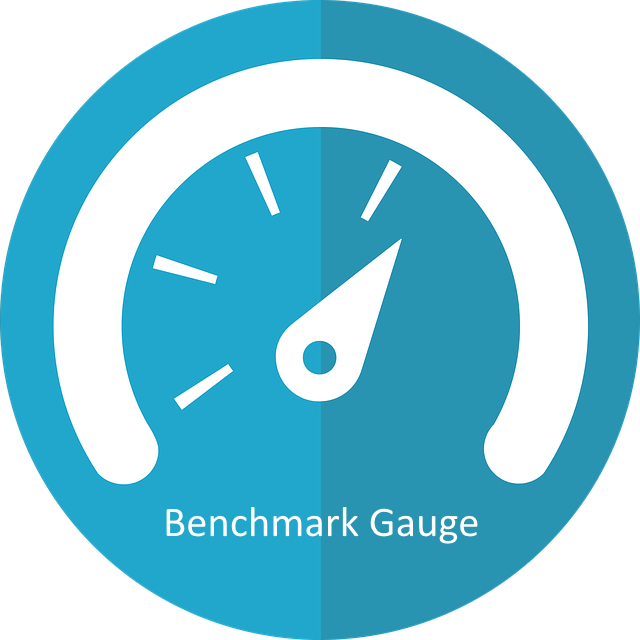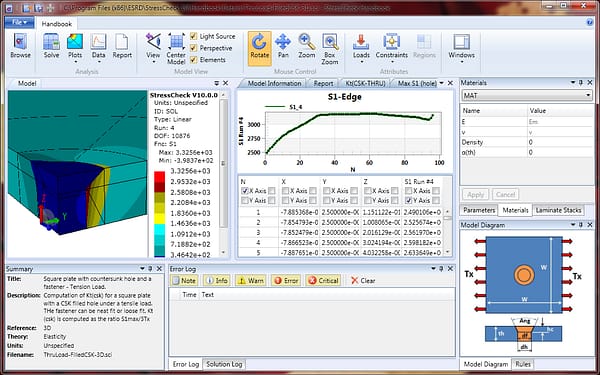At ESRD, we take Simulation Governance, Verification and Validation seriously. That’s why we have developed a comprehensive Handbook library of verified and validated models, compared our solutions to NAFEMS Benchmarks, implemented only theories that have been refereed in engineering journals and challenged our users to find a more efficient solution.
ESRD Benchmarks
Would you like to propose a Benchmark Challenge?
Do you have a challenging solid mechanics problem that you have been unable to sufficiently solve in other FEA tools? If so, complete our brief form and we will be happy to investigate.

Public FEA Benchmarks
The following are publicly available benchmark solutions, either posed by NAFEMS, the FEA community or in the available literature.
StressCheck Professional solutions to the linear benchmarks found in the article “Designer Oriented Software – Is It Accurate?” from the January 2020 edition of NAFEMS Benchmark magazine are provided below.
Goal: To determine the target values within 1% accuracy using the minimum mesh, p-level and DOF.
January 2020 NAFEMS Linear Benchmarks: StressCheck Solutions
Verified StressCheck Professional results for the benchmarks found in the January 2020 edition of NAFEMS Benchmark magazine are provided.

StressCheck Professional solutions to selected NAFEMS Standard Benchmarks are provided below. Our solutions indicate that our Numerical Simulation Technology is the simplest and most effective way to solve these benchmark problems.
The Standard NAFEMS Benchmarks: Linear Elastic Tests
Verified StressCheck Professional results for “The Standard NAFEMS Benchmarks: Linear Elastic Tests” are provided.

In late 2014, ESRD began participating in the NAFEMS Benchmark Challenge series. NAFEMS is the International Association for the Engineering Modelling, Analysis and Simulation Community (about NAFEMS). The goal is to compare solutions from multiple FEA tools, and determine who is closest to the exact solution.
A sample of NAFEMS Benchmark Challenges solved in StressCheck Professional are presented below:
NAFEMS Benchmark Challenge -01: Stress At the Centre of a Square Plate with Linear Boundary Tractions
NAFEMS Benchmark Challenge -02: Stress At the Centre of a Square Plate with Linear Boundary Tractions
Visit our Resource Library Benchmarks to see the full list of NAFEMS Benchmark Challenge solutions.
In many cases, benchmark challenges are defined as problems involving significant resources to solve accurately using numerical methods. We invite those who are users of FEA tools to solve one such problem, the classical Girkmann Problem:
- Stress resultants Qa (shearing force, kN/m) and Ma (bending moment, Nm/m)
- The location and magnitude of the maximum bending moment in the shell.
- Verify the results are accurate to within 5 percent. Describe how accuracy was verified.
- Software used, what mesh and type of elements were used.
ESRD received responses to this exercise from 15 FEA experts using a range of different modeling techniques and FEA software tools.
Visit our Resource Library to view a summary of the study results, and download a PDF of the proper approach to the solution of the problem.
CAE Handbooks, Verification & Validation
ESRD provides with the StressCheck Professional and CAE Handbook software a Handbook Library of parametrically defined models for comparison to published solutions from Timenshenko, Peterson, Mura, Tada, Blevins, Roark, et al. If there are differences, do they result from the mathematical model (in this case an approximation using the finite element method) or are they the result of errors in idealization (boundary conditions, material properties, etc.)?

StressCheck Professional is the only FEA software tool on the market that provides feedback to the user regarding the quality of the computed information. This ‘verification’ process assesses the sensitivity of the computed data to changes in the mesh density, order of the element shape functions, and element mapping. Verification is an important first step in validating the model.
- Verification – Am I solving the equations correctly?
- Validation – Am I solving the correct equations?
It is clear that validation can only be achieved if verification of the data of interest has been completed.
Users want to know: How well does your finite element analysis software predict the response of a physical system to an applied load? A comparison is made to test data if available, or benchmark solutions (e.g. classical methods, text books).
General guidelines pertaining to the use of mathematical models in solid mechanics were issued by the American Society of Mechanical Engineers (ASME) in 2006 and adopted by the American National Standards Institute. This document describes the importance of verification and validation.

For a technical brief summarizing the general verification & validation process for numerical simulation, refer to Verification and Validation Technical Brief.
Looking for Resources?
Recent News & Events
Quick Links
Testimonials
-
“We have found StressCheck very useful for computational fracture mechanics for both metallic and composite components. In recent years it has been extensively used in determining beta factors for RAAF’s C-130 Wing DTA locations and associated generic research.”
Dr. Manfred Heller
Head - Structural Mechanics, DSTO
 Serving the Numerical Simulation community since 1989
Serving the Numerical Simulation community since 1989 








